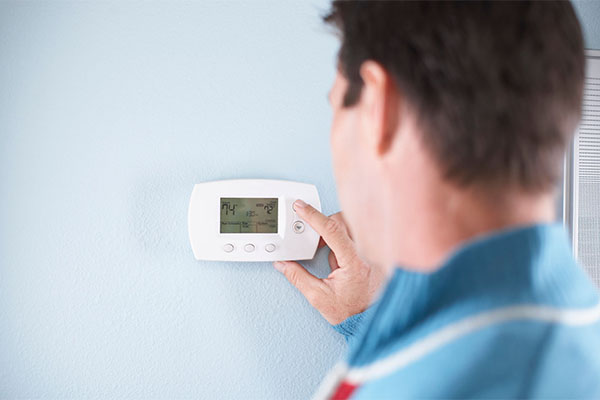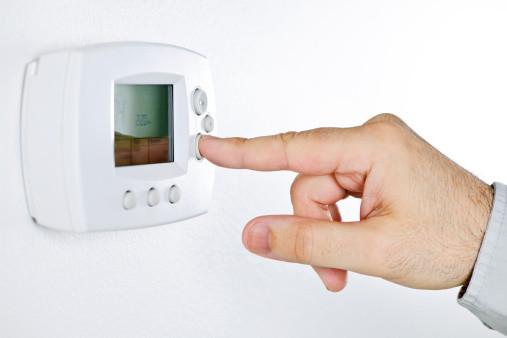Maintain The Heating System Throughout The Year, So It Runs Efficiently
Regardless of how low you set the thermostat, you won’t save on your heating bill if your furnace or heating system works inefficiently. Make sure to do the following:
- Get your furnace serviced once a year to make sure it’s in working order. Do this in the fall before winter weather sets in.
- Check window and door frames for air leaks and seal the leaks you find. If your windows are old, consider an upgrade to energy-efficient ones.
- Take advantage of natural sunlight. On really sunny days, open the window shades to let the warm light pour in.
What Heating Temperature Should My Thermostat Be Set to in Winter?
Everyone reacts differently to the weather and changing of seasons. The temperature outside can play havoc on our moods and might urge us to adjust the temperature by cranking up the furnace, getting under a fleece blanket, and binge-watching something on the couch.

But the truth is heating your home throughout the winter takes a lot of energy. And with natural gas prices in 2021 expected to be 30 percent higher than last winter, families across the United States will need to find a way to reduce heating costs while still keeping the family toasty warm.
The best way to save energy and lower your monthly heating bill is to properly set the thermostat to keep your home’s temperature at the right comfort level this winter.
Ease into Winter to Start Saving
Every home has its temperature preference, but setting the thermostat to that temperature and never changing it isn’t helpful to your energy bills.
- Set your thermostats at that desired high temperature.
- Once you and your family acclimate to the colder weather, lower the temperature in the home by one degree each week.
- This one-degree reduction – maintained for even eight hours – can reduce a home’s energy bill by 1 percent, according to the U.S. Department of Energy.
- Lowering the temperature further and preserving these lower temperatures for longer periods of time increases those savings, and you’ll probably never notice the difference with such a slow, gradual change.



